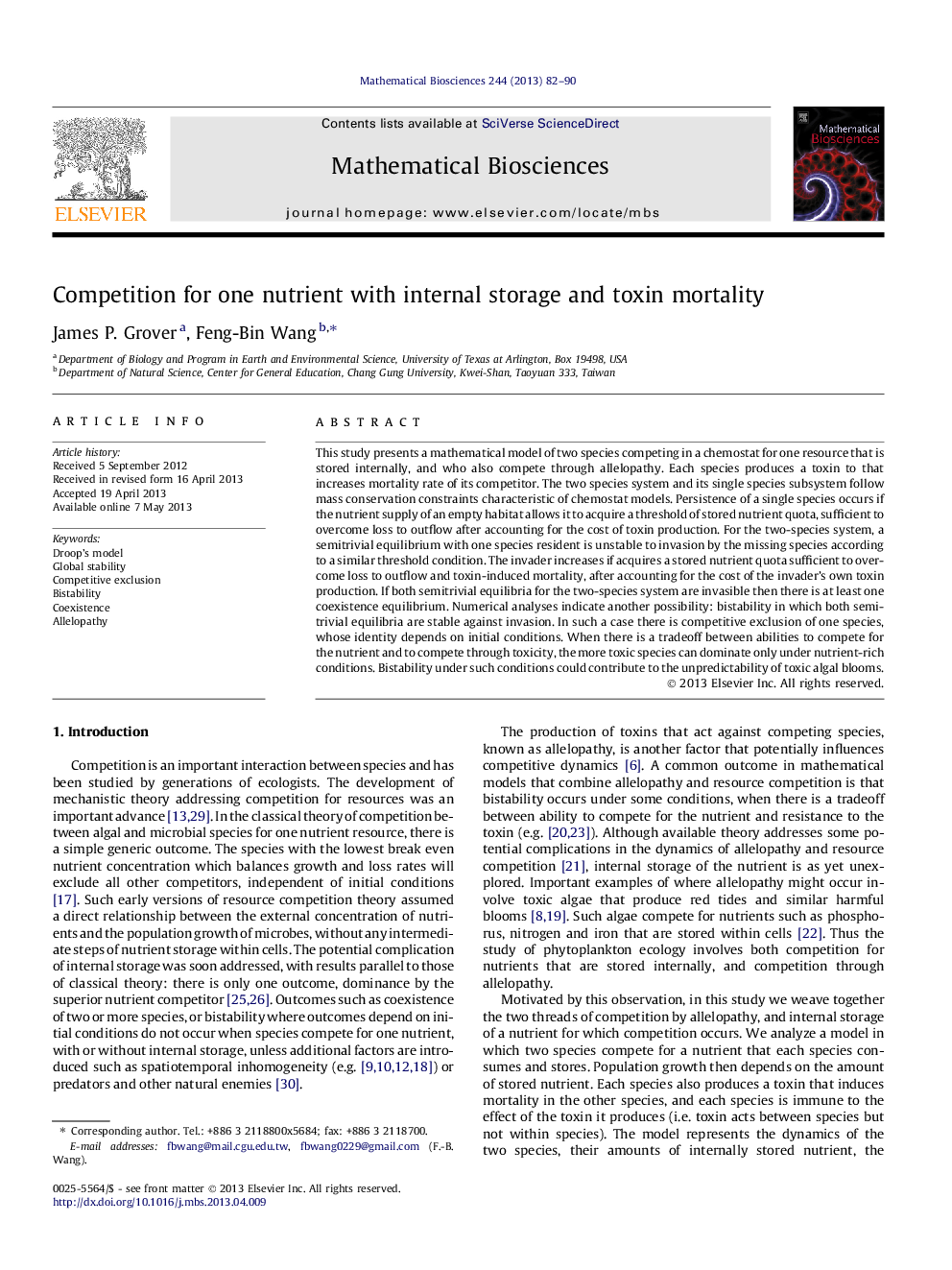| Article ID | Journal | Published Year | Pages | File Type |
|---|---|---|---|---|
| 6372154 | Mathematical Biosciences | 2013 | 9 Pages |
Abstract
This study presents a mathematical model of two species competing in a chemostat for one resource that is stored internally, and who also compete through allelopathy. Each species produces a toxin to that increases mortality rate of its competitor. The two species system and its single species subsystem follow mass conservation constraints characteristic of chemostat models. Persistence of a single species occurs if the nutrient supply of an empty habitat allows it to acquire a threshold of stored nutrient quota, sufficient to overcome loss to outflow after accounting for the cost of toxin production. For the two-species system, a semitrivial equilibrium with one species resident is unstable to invasion by the missing species according to a similar threshold condition. The invader increases if acquires a stored nutrient quota sufficient to overcome loss to outflow and toxin-induced mortality, after accounting for the cost of the invader's own toxin production. If both semitrivial equilibria for the two-species system are invasible then there is at least one coexistence equilibrium. Numerical analyses indicate another possibility: bistability in which both semitrivial equilibria are stable against invasion. In such a case there is competitive exclusion of one species, whose identity depends on initial conditions. When there is a tradeoff between abilities to compete for the nutrient and to compete through toxicity, the more toxic species can dominate only under nutrient-rich conditions. Bistability under such conditions could contribute to the unpredictability of toxic algal blooms.
Related Topics
Life Sciences
Agricultural and Biological Sciences
Agricultural and Biological Sciences (General)
Authors
James P. Grover, Feng-Bin Wang,
